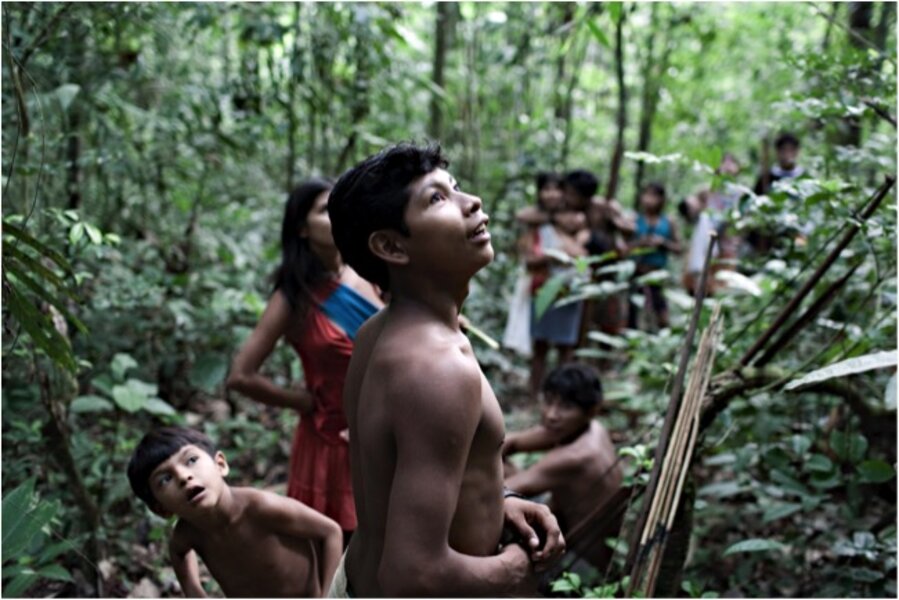How Brazil curbed Amazon deforestation by 90 percent in 10 years
Loading...
Deforestation in the Amazon rainforest of Brazil has plummeted in the last decade, as the government has made new agreements with farmers and ranchers and enforced laws against those who clear land illegally.
Enforcement of existing laws has contributed the most to dropping rates of deforestation, Daniel Nepstad, executive director at Earth Innovation Institute, a research organization for sustainable farming methods, told The Christian Science Monitor. A "command and control strategy" penalizes anyone who clears forests illegally.
"It was possible through practical enforcement of previous and new regulations," Dr. Javier Godar, a research fellow with the Stockholm Environment Institute, told The Christian Science Monitor. He said law enforcement had to improve how the forest was being monitored.
Beginning in 2004, the government of Brazil has protected half of its Amazon rainforest land from deforestation by designating it as national park land, according to GoodNewsNetwork. The amount of forest land cleared annually in Brazil dropped from 10,500 square miles in 2005 to 1,850 square miles in 2014.
Deforestation peaked in 2003 and 2004, when Brazil cleared 10,700 square miles, but in 2008 then-President Luiz Inacio Lula da Silva began working on government policies to slow the decline, the Los Angeles Times reported.
Farmers have been at the root of the change, Dr. Nepstad says. Some were removing forests in order to plant soybeans, but the "Soy Moratorium" and "Cattle Agreement" cut off farmers and ranchers who were clearing more forest from the legal markets.
The forest's rebound is "fragile," Nepstad says. Maintaining the current, lower rate of deforestation will take effort. He suggests that the system needs more "carrots" – positive incentives to the farmers and ranchers who abstain from clearing land.
Some Brazilian soybean farmers have traveled to Bolivia and Paraguay, but researchers do not know whether they have left because of the crackdown on deforestation in Brazil. Dr. Godar says the government presence increased in the Amazon in order to achieve this, but deforestation enforcement need not stop Brazilian farmers from working without clearing Amazon land.
"It is important to say that there is an abundance of abandoned areas in the Amazon – especially low producing, semi-abandoned pastures – so there is scope to increase the productive farming area without clearing the forest in large areas of the Amazon," he told The Christian Science Monitor.
Brazilian President Dilma Rousseff said the focus on enforcement will continue, and the country aims to end all illegal deforestation in Brazil by 2030, the Los Angeles Times reported. To help meet this goal, German Chancellor Angela Merkel pledged to give Brazil $618 million after she she visited the country in August, with much of it reserved for rainforest work.
[Editor's note: An earlier version of the story misstated the square milage of forests cleared.]








